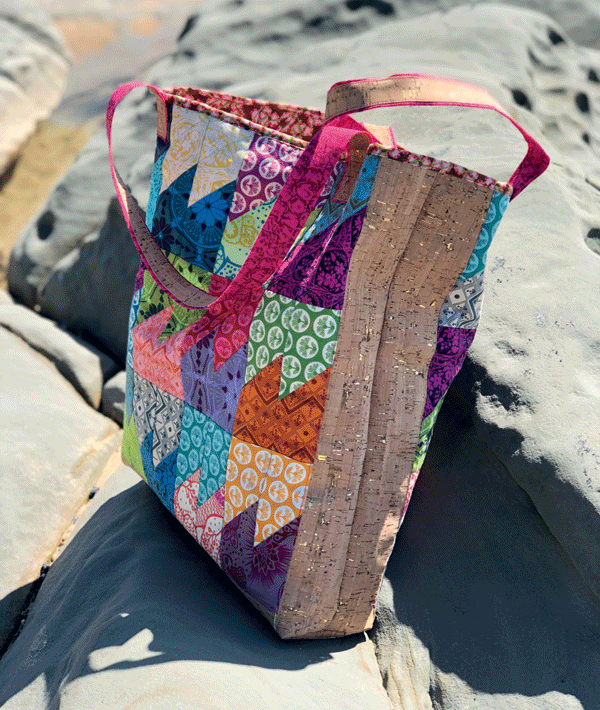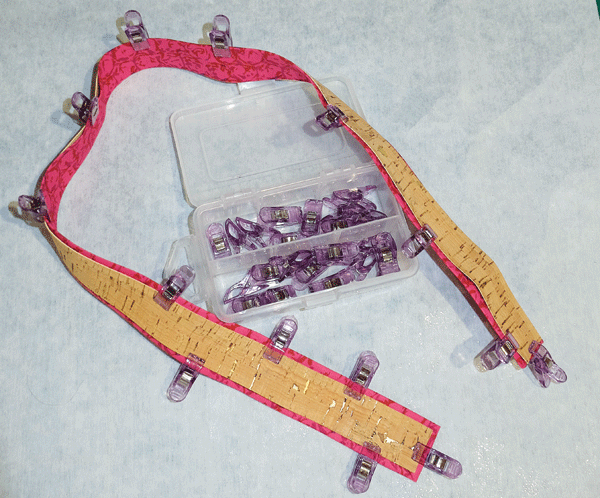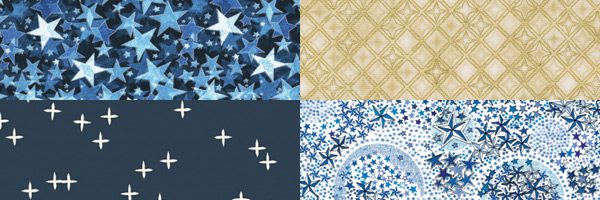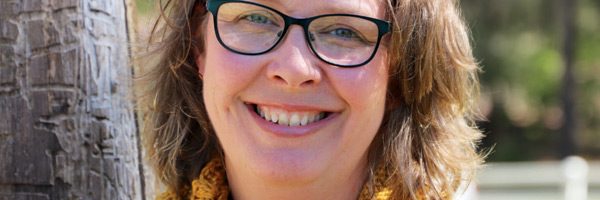
Road Test by Michelle Marvig: Cork Fabric
Driven by Michelle Marvig
It is amazing how many things change in the patchwork industry! When I started there were fewer fabric companies, less choice of fabric, smaller machines, no internet. Today we are spoilt for choice, with more fabric than any shop can stock, tools and notions to make our lives easier, and inspiration available 24 hours a day. While teaching at a retreat recently, I came across fabric made of real cork. Now that was a first for me. Cork covered my floor — it was not a fibre that I crafted with!
Cork is a natural element — the bark of the cork oak tree. Most cork forests are found in Spain or Portugal and the bark is only harvested every nine years. It’s a sustainable product and a viable option to leather for our projects. Once harvested it is cured and shaved into thin sheets, which are then applied to a base fabric using a similar technique to the manufacture of vinyl. You would think this product would be stiff, but it is softish to touch, almost velvety and pliable.
There are pros and cons to working with this product. The great news is that it does not unravel; you can leave a raw edge on your item with no problems. You can cut it with a rotary cutter or scissors. Normal needles are used in your sewing machine. I would suggest a denim needle or something with a sharp point, but not necessarily a thicker needle. Cork is not self-healing, so all needle or pin holes will remain in the project, even if unpicked. The fabric backing feeds under your foot as normal cotton fabric does. However, when working from the cork side of the fabric I used a walking foot, as the texture of the cork grabs the underside of a normal foot and retards the movement.
You can easily draw or mark your pattern shapes onto the back of the cork fabric. As you can only wipe with a damp cloth, you would not want to mark the front of the cork. Ironing is an issue. I did place a cloth over the surface and gently ironed the fabric back over the cork, with no problems. But when I placed the cloth over another section and held the iron down too long, the layer of cork started to bubble off the backing fabric. Seams can be finger-pressed or even glued in place. I did try a seam roller too, but it was not very successful. Basting tape, or a double-sided 6mm adhesive tape such as Rescue tape for hems, can be used to hold seam allowances in place, or be used instead of pins to place zippers or trims onto the cork. The other thing that you can use instead of pins is clips, such as Clover Wonder Clips. These hold everything in place and do not mark the cork. Glue can also be used, especially if you want a double-sided cork shape, such as a tab for a bag. If two sheets of cork are glued wrong sides together, the shape can then be cut out and top-stitched.
Real cork fabric is not cheap. It is available by pieces, or by metre at 140cm wide. However, it is something that you would only want to use a small amount of and is a great way to trim your next handbag. It is very suitable for the base, handles and flaps of a bag. It could be used for the cover for a journal or iPad, appliqués on a cushion, or as a fancy bulletin board. You cannot wash the real cork, so I would not suggest using it for placemats or other items that require a lot of laundering.
If you like the idea of the cork but are not sure about the price or dealing with this new fibre, I can help. In November 2017, Windham Fabrics released a new basic fabric line — Uncorked. This cotton fabric is designed to look like coloured cork fabric with metallic accents. As it is 100-per-cent cotton fabric, it has no special instructions needed for use and was available in 24 different colours at the time of writing. The real cork fabric is currently available mainly in the natural cork colour that I used for trim on the bag.
Both the cork fabric and the uncorked fabric ranges are available wholesale in Australia through XLN Fabrics (www.xln.com.au). You will find both fabrics in Australian patchwork stores. Have fun playing with this new fibre.




